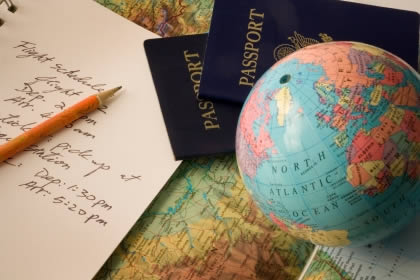Rotorua City Profile
Known as New Zealand’s “Sulfur City,” Rotorua is home to steaming hot springs, explosive mud pools, and spurting geysers.
While the dynamic geothermal landscape is a great attraction, so is Rotorua’s culture. Roughly a third of the city’s population is Maori, and the people’s traditional way of life is well preserved. Tourists delight in watching the native performances and partaking in a traditional hangi. Despite it’s odor of rotting eggs, Rotorua continues to be a very popular destination do no doubt to all the hot springs, mud pools and geysers.
Population
68,200 [Source: Wikipedia.org – 2009]
Location
Rotorua lies in the heart of New Zealand’s North Island.
The closest major tourist centers are Tauranga, which is 37 miles north, and Taupo, which is 50 miles south.
Weather
Rotorua enjoys a pleasant climate all year round. There is plenty of sunshine in summer, although the mercury rarely soars beyond 30ºC. Winter is characterized by weather which is crisp and cool, but not cold by European standards. In winter, daytime temperatures average between 9ºC and 16ºC.
Places of interest
Rotorua’s tourists flock to the area’s spots of geothermal activity. Kuirau Park, at the northern end of the city, has many walking tracks leading to geothermic hot spots.
Once your feet are weary you can soak them in the hot bubbling mud pools. Rainbow Mountain Scenic Reserve, located 26 kilometers out of the city center, is home to some magnificent crater lakes, evidence of this area’s volcanic activity. While the walking tracks are well formed and easy for people of all abilities to navigate, you should wear comfortable shoes and clothing while hiking the area. It should take roughly one hour to complete the loop from the car park to the lakes and back again.
If it’s geysers you’re after, take a visit to Whakarewarewa Forest. Its Pohutu Geyser is one of the area’s most famous. It erupts between 10 and 20 times a day, with each blast shooting hot water half a meter high for around 10 minutes. You’ll know a big blast is in store as the smaller Prince of Wales’ Feathers geyser always shoots first. Those visiting New Zealand to get their blood pumping should stick around the forest a little longer. While its geysers are legendary, so are its mountain bike trails. It’s been described as “the Disneyland of mountain biking” for its challenging all-terrain tracks. Rotorua’s rich history is on show at the Government Gardens. This spot in downtown Rotorua was the site of many Maori battles. The people gifted the land to the crown in the late 1800s, and many trees from that time still remain in the formal gardens. An old bathhouse has been converted into a modern museum which documents the area’s history. But the Government Gardens still give guests a place to relax. The Mediterranean style Blue Baths have been recently restored. The sparkling pools are great for soak, but the classic tearoom and Lido Lounge give you more options for a luxurious day of leisure.
Where to eat
While in Rotorua make sure you make time for a traditional New Zealand hangi. This Maori feast sees meats, poultry, and generous portions of root vegetables smothered in herbs and buried under hot volcanic rocks. This earth oven gives the food a distinctly smoky flavor and keeps it moist. A hangi is a communal experience travelers can enjoy at Rotorua’s Maori villages, including the Tamaki Maori Village and Te Puia. These venues also typically stage a traditional Maori concert, featuring dancing and singing, before or after the meal.
The lake end of Tutanekai Street is an obvious destination for peckish travelers. Known as “Eat Streat” by the locals, it has a buzzing atmosphere with alfresco dining and live musicians playing every weekend. The cuisine here is diverse, so it should satisfy all tastes. Carnivores love Mac’s Steakhouse, while European palettes flock to Nuvolari and Café Ephesus. Lady Jane’s Ice Cream Parlour is the perfect place for families to cool down on a warm day in Rotorua.
Where to stay
Rotorua offers plenty of accommodation options for travelers, from luxury hotels to affordable hostels.
While there are many inner city options, rural retreats and farmstays help capture the character of the area. Rural getaways in Rotorua’s lake and bush areas can make visitors forget they’re so close to a thriving tourist town. These tranquil spots have many bed and breakfast options. Rooms may be majestic, such as at the Nicara Lakeside Lodge, or modest like those at the Westminster Lodge. No matter how up-market your accommodation you can expect generous breakfasts and the expertise of your hosts, who can typically recommend attractions and dining options. Farmstays give travelers a taste of real life in Rotorua. Guests at spots like Woodstock Farm and will interact with their hosts and their animals. Like the bed and breakfasts, a morning meal is generally included as part of the tariff, while dinner can often be arranged for an additional fee.
